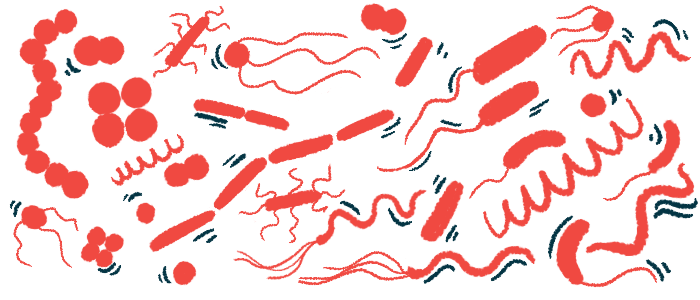Gut bacteria is involved in systems that help regulate fat in liver: Study
Findings could aid in understanding, treating fatty liver disease

Biochemical crosstalk between the body’s own cells and microbes living in the intestines helps regulate the accumulation of fat in the liver, a new study reveals.
The findings could have implications for understanding and treating fatty liver disease, which is marked by an abnormal buildup of liver fat. The study, “Host metabolism balances microbial regulation of bile acid signalling,” was published in Nature.
There are billions of bacteria and other microorganisms that make their home in the human digestive tract. These microscopic inhabitants of the intestines, referred to as the gut microbiome, play key roles in human health and digestion.
The human body relies on molecules called bile acids to break down and digest fats. Produced in the liver and transported to the intestines, they are crucial for food digestion.
In fatty liver disease, excess fat accumulating in liver cells can impair the liver’s ability to produce, transport, and regulate bile acids. This disruption in bile acid metabolism can lead to decreased fat digestion and absorption in the small intestine, and bile accumulating in the liver, worsening the condition.
Bile acids from the liver are marked with certain molecular tags that help regulate their function. Bacteria in the gut microbiome remove these molecular tags, producing so-called free bile acids that can activate a receptor protein called FXR in human intestinal cells. When FXR gets activated, it sends signals to the liver to decrease bile acid production.
“It now has become clear that bile acids are more than just digestive aids; they act as signaling molecules, regulating cholesterol levels, fat metabolism, and more,” Frank Schroeder, a co-author of the study at Cornell University, said in a press release. “They do all this by binding to FXR, which acts like a traffic light, controlling cholesterol metabolism and bile acid production to avoid excess buildup.”
This mechanism has long been thought to help prevent the liver from making too many bile acids. But scientists suspect other mechanisms may be at play to help control these systems.
A ‘balancing act’
Here, researchers analyzed bile acid molecules in mice with or without an intact gut microbiome. Mice that lacked a gut microbiome had fewer free bile acids, which was expected, since gut bacteria are critical for them to form. But mice without a gut microbiome had lower levels of bile acids attached to a molecular tag called methylcysteamine. These methylcysteamine-tagged bile acids, which the researchers dubbed BA-MYCs, hadn’t been previously described.
The researchers found that BA-MYCs can block the activity of the FXR receptor protein, which triggers the liver to make more bile acids. Blocking FXR has been shown to help reduce fat buildup in the liver and, indeed, BA-MYCs could trigger a decrease in liver fat, researchers found.
The finding suggests “BA-MYCs may have substantial therapeutic potential,” wrote the researchers, who also found that feeding the mice a high-fiber diet could increase BA-MYC production. This suggests ” levels of these conjugates can be regulated by diet and prebiotic or probiotic supplements, which may have translational potential.”
In theory, BA-MYCs could be made by gut bacteria themselves or they could be produced by cells in the intestines. Through a series of molecular tracking experiments, the scientists showed intestinal cells take free bile acids made from bacteria then add the methylcysteamine tag to make BA-MYCs, creating a system whereby the body can work in concert with gut bacteria to fine-tune the production of bile acids and help regulate liver fat.
“This balancing act is crucial,” Schroeder said. “When gut bacteria produce lots of bile acids that strongly activate FXR, the body pushes back by making BA-MCYs, ensuring the bile acid system stays balanced.”






